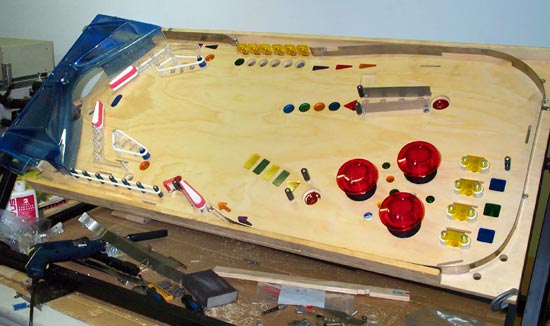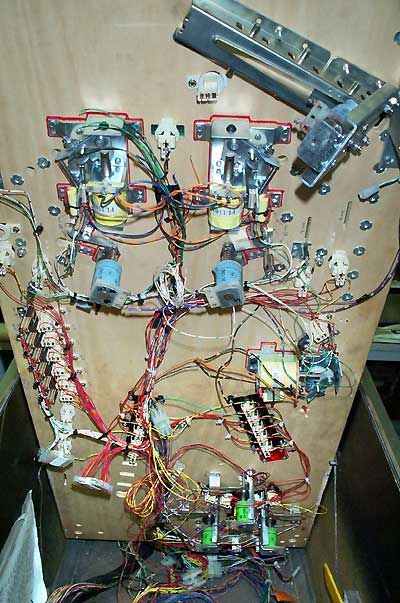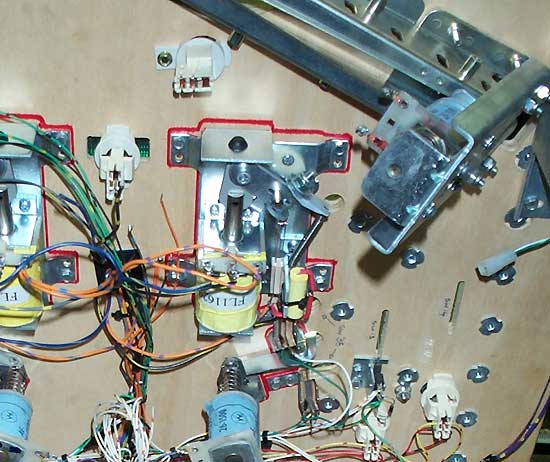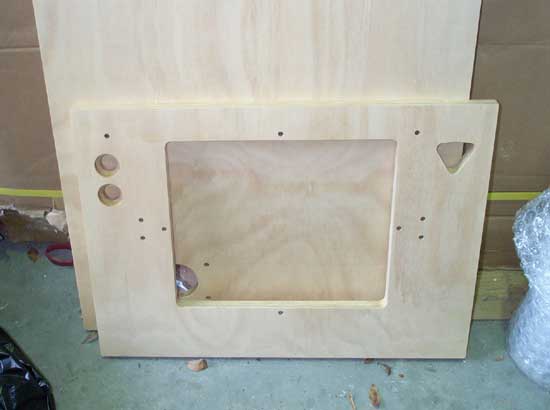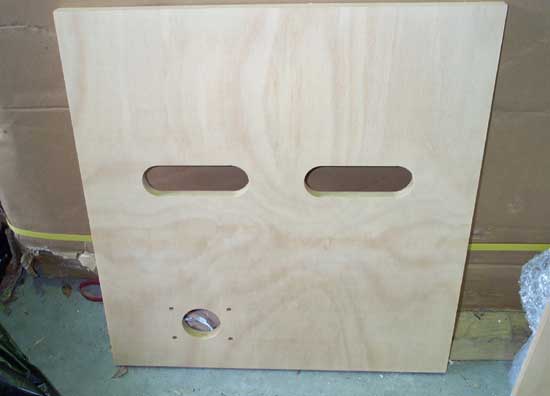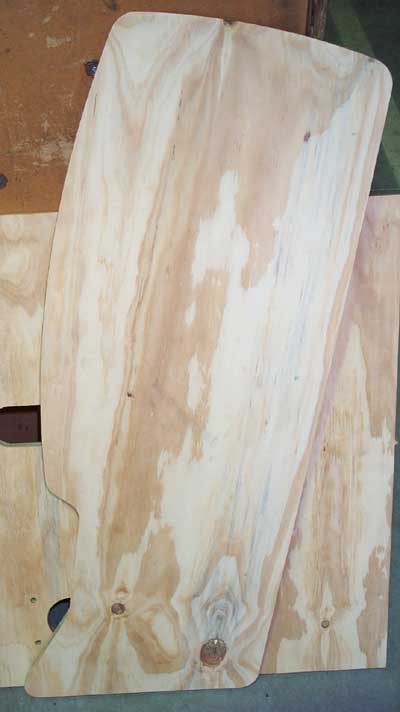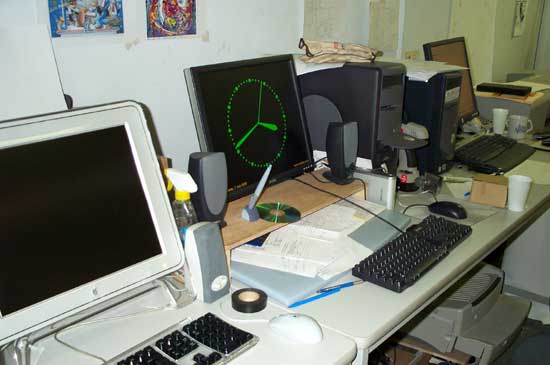
|
PINS AND PARTS
|
|
Story dated July 12, 2005 In our last progress report from Wayne Gillard's - Mr Pinball Australia - game production facility we had this whitewood of his first game Crocodile Hunter.
Since then, there have been many changes and of course his purchase of various patents, rights, information and internet property from Williams. Wayne's company is now called The Pinball Factory and the former Williams Pinball website at www.pinball.com has now taken on the Pinball Factory branding. All the previous content is still there but some new sections such as the forum have been introduced. Work continues on Crocodile Hunter and this preview of the underside of the test playfield shows some interesting parts and construction techniques.
It is a mixture of familiar Williams parts and assemblies and new style lamp sockets.
The acquisition of the Williams rights and information has resulted in both a delay and some changes to the Crocodile Hunter game. Wayne told Pinball News: "We have re-drawn the game and cabinet using Williams dimensions and information." Meanwhile, the need to work on the game concurrently with manufacturing the parts he will be able to sell from October has also taken its toll: "We are trying to split our time on both, so that slows our game down a bit as there are only so many hours in a day" he said. There are also some details on the game cabinets to be used.
This right-hand cabinet side shows the grille for the surround speakers at the front/side of the game allowing for 4.1 surround sound when combined with the cabinet bass speaker and the backbox speakers.
The front panel features the regular cutout for the coin door but it is also pre-drilled for a security bar to be installed. Wayne told Pinball News how some games will have the bars fitted where requested but games can be ordered un-drilled if required. Also of interest are the two start button holes. The second button's use will depend on the game and may be for an extra ball buy-in or feature-related.
And this the cabinet's back panel. All the cabinet sides are made from plywood with the base made from MDF. So let's move on to the backbox.
This picture shows the profile of the backbox. With curves reminiscent of Pinball 2000's head but without the depth, it is probably the biggest difference in The Pinball Factory's cabinet design. We spoke about the impact of the parts business on the game manufacturing side of the operation, but what parts are being made? One problem facing The Pinball Factory was not having the molds to make some of the parts. The cost involved in remaking the molds or the equipment needed in the US was prohibitive, so Wayne has set up a factory in India to make both the tooling and parts. Half of the parts being made for Wayne are coming from the original manufacturing companies, but for those cases where either the tooling is no longer available or the company either is unable to make the parts, or no longer exists, the factory in India can meet the demand and produce the parts to the same quality as the originals. Wayne told Pinball News how the demand for parts means it is not always possible to come to agreements with Illinois Pin Ball over who will make which part: "We are trying to work with IPB, however we need to move very quickly on parts and sometimes it is easier just to retool and run the parts, and move on to the next part." One of the problems The Pinball Factory would face if they decided to re-make classic Williams/Bally games is the availability of WPC board sets. This, however, hasn't proved a problem for Wayne. "We just ran 12,000 boards of OEM boards for past WPC games; cpus etc. We ran them as per the originals. (They are) replacements for existing games as well as a project we are working on... they are not for our new games but some may be used in remakes." He has also confirmed the first playfields to be re-run. They are Medieval Madness, Funhouse, Attack From Mars and Monster Bash, although the last one is subject to approval from Universal Studios, the owner of the Monster Bash characters.
Finally, here's a sneak look inside the design studio at the Pinball Factory. Artwork is created on the Apple Mac in the foreground with the Dell PCs used for AutoCad playfield layout and design.
|
|
© Pinball News 2005 |
